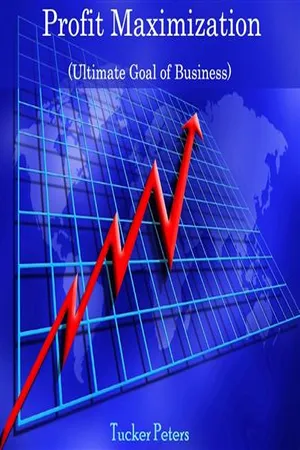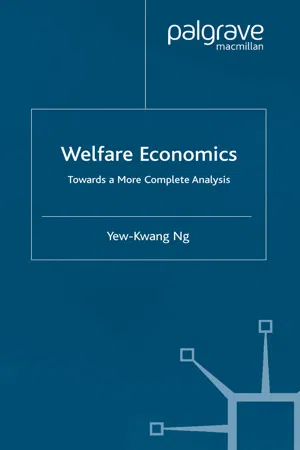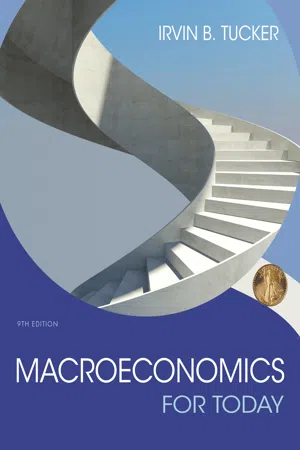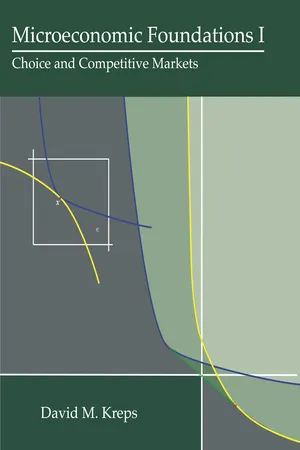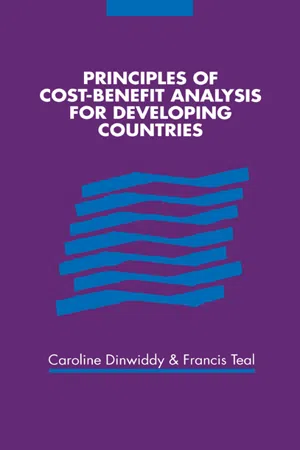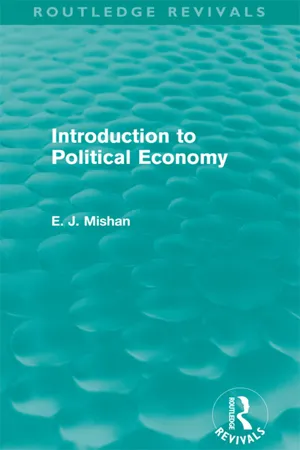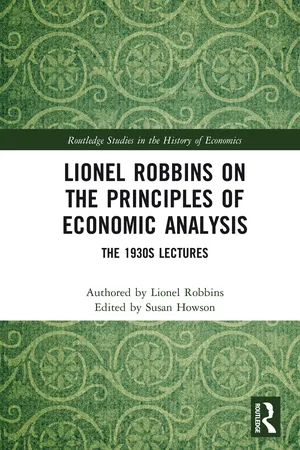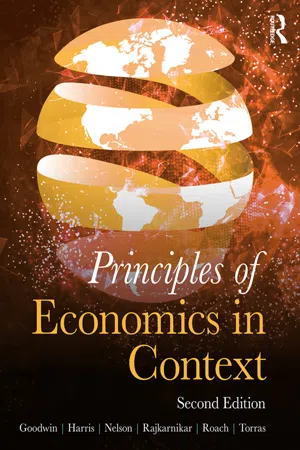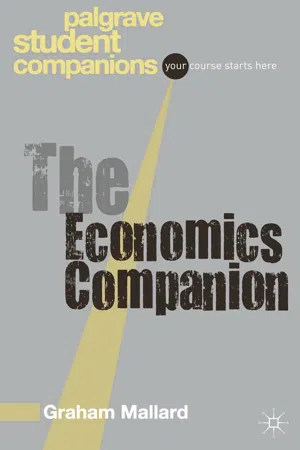Economics
Consumer Surplus
Consumer surplus is the difference between what consumers are willing to pay for a good or service and what they actually have to pay. It represents the benefit or value that consumers receive from making a purchase at a price lower than their maximum willingness to pay. Consumer surplus is a key concept in understanding consumer behavior and welfare economics.
Written by Perlego with AI-assistance
Related key terms
1 of 5
10 Key excerpts on "Consumer Surplus"
- No longer available |Learn more
- (Author)
- 2014(Publication Date)
- Orange Apple(Publisher)
In some schools of heterodox economics, the economic surplus denotes the total income which the ruling class derives from its ownership of scarce factors of production, which is either reinvested or spent on consumption. In Marxian economics, the term surplus may also refer to surplus value, surplus product and surplus labour. Consumer Surplus Consumer Surplus is the difference between the maximum price a consumer is willing to pay and the actual price they do pay. If a consumer would be willing to pay more than the current asking price, then they are getting more benefit from the purchased product than they spent to buy it. An example of a good with generally high Consumer Surplus is drinking water. People would pay very high prices for drinking water, as they need it to survive. The difference in the price that they would pay, if they had to, and the amount that they pay now is their Consumer Surplus. Note that the utility of the first few liters of drinking water is very high (as it prevents death), so the first few liters would likely have more Consumer Surplus than subsequent liters. The maximum price a consumer would be willing to pay for a given amount is the sum of the maximum price he would be willing to pay for the first unit, the maximum additional price he would be willing to pay for the second unit, etc. Typically these prices are decreasing; in that case they are given by the individual demand curve. If these prices are first increasing and then decreasing there may be a non-zero amount with zero Consumer Surplus. The consumer would not buy an amount larger than zero and smaller than this amount because the Consumer Surplus would be negative. The maximum additional price a consumer would be willing to pay for each additional unit may also alternatingly be high and low, e.g. if he wants an even number of units, such as in the case of tickets he uses in pairs on dates. - eBook - PDF
Welfare Economics
Towards a More Complete Analysis
- Y. Ng(Author)
- 2003(Publication Date)
- Palgrave Macmillan(Publisher)
4 The Magnitude of Welfare Change: Consumer Surplus The discussion of the magnitude of welfare change in this chapter centres on the concept of Consumer Surplus associated with a price change. But some of the measures of Consumer Surplus – such as compensating variation, equivalent variation and our proposed measure, marginal-dollar equivalent (see the appendix to this chapter) – can also be used to measure welfare changes that are associated with other changes. The concept of Consumer Surplus has given rise to a great deal of debate and confusion. While it has been regarded as superfluous, or at least the theoretical foundation of using Consumer Surplus as a measure of welfare change is usually regarded as suspect, its use in cost–benefit analyses and policy discussions has been widespread. This chapter reviews the various measures of Consumer Surplus and discusses some complications, before justifying its use as an approximate measure. 4.1 The origin of the concept: Dupuit and Marshall The concept of Consumer Surplus was formulated in about 1850 by the French engineer J. Dupuit, who was concerned with the question as to the amount of worthwhile subsidy towards the cost of constructing a bridge. He was clearly aware of the fact that consumers are usually willing to pay more for a good than they actually pay. Hence the consumer obtains an ‘excess satisfaction’, or a surplus. The concept of Consumer Surplus gained prominence after the publication of Marshall’s Principles of Economics. Marshall was the first to introduce the concept to the English-speaking world, but it is said that he was less than generous in acknowledging Dupuit’s priority (see Pfouts, 1953, p. 316). Marshall (1920, p. 124) defined Consumer Surplus as ‘the excess of the price which he would be willing to pay rather than go without the thing, over that which he actually does pay’. - eBook - PDF
- Irvin B. Tucker, Irvin Tucker(Authors)
- 2016(Publication Date)
- Cengage Learning EMEA(Publisher)
KEY CONCEPTS Consumer Surplus Producer surplus Deadweight loss SUMMARY • Consumer Surplus measures the value between the price consumers are willing to pay for a prod-uct along the demand curve and the price they actually pay. • Producer surplus measures the value between the actual selling price of a product and the price along the supply curve at which sellers are willing to sell the product. Total surplus is the sum of Consumer Surplus and producer surplus. • Deadweight loss is the result of a market that operates in disequilibrium. It is the net loss of both consumer and producer surplus resulting from underproduction or overproduction of a product. SUMMARY OF CONCLUSION STATEMENTS • Total Consumer Surplus measured in dollars is represented by the total area under the market demand curve and above the equilibrium price. • Total producer surplus measured in dollars is represented by the total area under the equilib-rium price and above the supply curve. • The total dollar value of potential benefits not achieved is the deadweight loss resulting from too few or too many resources used in a given market. APPENDIX TO CHAPTER 3 | Consumer Surplus, Producer Surplus, and Market Efficiency 95 Copyright 2017 Cengage Learning. All Rights Reserved. May not be copied, scanned, or duplicated, in whole or in part. Due to electronic rights, some third party content may be suppressed from the eBook and/or eChapter(s). Editorial review has deemed that any suppressed content does not materially affect the overall learning experience. Cengage Learning reserves the right to remove additional content at any time if subsequent rights restrictions require it. ............................................................................................................................................................................................................................................. STUDY QUESTIONS AND PROBLEMS 1. Consider the market for used textbooks. - eBook - ePub
Microeconomic Foundations I
Choice and Competitive Markets
- David M. Kreps(Author)
- 2012(Publication Date)
- Princeton University Press(Publisher)
Our final task is to move from one consumer to an entire marketplace of consumers. But this is easy. Market demand is just the sum of demands coming from individual consumers. The change in Consumer Surplus is the integral “under” the market demand function, so if you interchange the summation and integration, you find that the change in aggregate (market) Consumer Surplus is just the sum of changes in individual-consumer Consumer Surplus. And each of those is a compromise between the two measures of appropriate dollar compensation, EV and CV, for the individual consumer.Bibliographic Notes
The concept of Consumer Surplus is attributed in the literature to Dupuit (1844). Alfred Marshall developed and popularized (at least, among economists) the use of this concept; it use has been the subject of controversy ever since, with such luminaries as John Hicks promoting its use and Paul Samuelson decrying it. The strongest case for its use would seem to arise in situations where a tight (and small) bound can be put on the difference between the compensating and equivalent variations; see, for instance, Willig (1976) for such a bound. Producer surplus, being the change in profit, is relatively free of this sort of controversy.But the general idea that one can sum in dollar-denominated terms the impact of a policy on individual firms and consumers and make on that basis social welfare judgments is controversial on a completely different plane and takes us back to Chapter 8 and the foundations of welfare economics and social choice. Arrow’s (1963) chapter on the compensation principle is (once again) recommended.Problems
*12.1. Proposition 12.3 says that if ( ) is the singleton set { } (fixing all other prices), then πf viewed as a function of p1 is differentiable at , and that derivative is . Prove the converse: If πf , viewed as a function of p1 , is differentiable in p1 at , then (a) ( ) is singleton, and (b) the sole element of ( ) is that derivative.12.2. Supply the details of the proof of Proposition 12.10. - Caroline L. Dinwiddy, Francis J. Teal(Authors)
- 1996(Publication Date)
- Cambridge University Press(Publisher)
It may be useful to notice here that with labour as the only variable factor of production, producer surplus, defined as the difference between total revenue and total variable cost, can also be identified in the factor market. Infigure2.7, total revenue is given by the area below the marginal revenue product curve; subtracting the wage payments (which, as noted above, constitute total variable cost) will leave the area below the factor demand curve and above the wage paid as an alternative representation of producer surplus. 2.5 Conclusion Measuring changes in welfare by adding together changes in consumer and producer surpluses implies that welfare is a function of both price and Consumers and producers: basic theory 37 income. This chapter has examined in greater detail the concepts of consumer and producer surplus underlying the analysis of chapter 1. It was shown that unless compensated demand curves are used, changes in Consumer Surplus following a change in the price of a commodity typically include income as well as price effects. Even if compensated demand curves are used, there is likely to be a discrepancy between the social value of a price change evaluated using the measure based on compensating variation (CV) and the measure based on equivalent variation (EV). The concept of producer surplus was shown to be essentially a measure of income, consisting of the return (quasi-rent) to any fixed factors in the short run and any element of pure profit arising from decreasing returns to scale. Both consumer and producer surplus are partial equilibrium tools of analysis measuring the consequences of a price change in one market at a time. However, a drop in the price of one commodity will typically reduce the demand for substitute goods and increase the demand for complemen- tary goods. An increase in income can lead to a shift in the demand for any good which has a non-zero income elasticity of demand.- E. Mishan, E. J. Mishan(Authors)
- 2013(Publication Date)
- Routledge(Publisher)
market demand curves only. It is practically impossible to estimate demand curves, and therefore the relevant Consumer Surpluses, of single individuals.Fortunately, it is the Consumer Surplus for the market, for society in effect, that the normative economist is trying to capture. Therefore estimates of the market demand curves for particular goods will admirably serve his purpose – which is not to say that there are not statistical difficulties in estimating many such demand curves owing to the paucity of data.After this somewhat leisurely exposition, we can begin to romp along at a brisker pace. Figure 8 shows a market demand curve DD in which the price has fallen from P2 , say $10 per unit x, at which price the amount OQ2 was bought, to Pl , say $8 per unit, at which price the amount OQ1 is bought. A fall in the price of x by $2 implies an increase in the welfare of buyers of x; at least, it does so if no other goods prices rise, which we may assume in a partial context. The measure of the gain in social welfare from this fall in price is the Consumer Surplus as measured by the shaded area between the two horizontal price-lines from P2 and P1 respectively.If this is not evident at first, look at it thus: if the price P2 were first established where previously the good x had been unobtainable, the improvement would have been measured as a Consumer Surplus equal to the triangular area DP2 E. If, instead, the lower price P1 had first been established, the improvement would have been a larger Consumer Surplus, one equal to the larger triangular area DP1 G. It follows that the difference to consumers of x from having the lower market price P1 rather than P2 is the difference between the two triangular areas, a difference that is measured by the shaded horizontal strip P2 P1 GE. This latter area then is the Consumer Surplus for a fall in price from P2 to P1 .Figure 8Perhaps you would like to look at it another way, more intuitively obvious to some. The rectangular part of the shaded area P2 P1 FE is the price difference on the original amount of x, OQ2 , bought when the price was P2 . Were consumers restricted to buying this same amount OQ2 of x (even though the price had fallen to P1 ) they would have saved just that much money. For this shaded rectangle P2 P1 FE is equal to the price difference (P2 – P1 ) times OQ2 of x. Thus this area measures the most consumers would pay for this fall in price provided they were allowed to buy no more than OQ2 , this being the amount of x they bought at the old price P2- Lionel Robbins, Susan Howson(Authors)
- 2018(Publication Date)
- Routledge(Publisher)
The area behind the market demand curve no more expresses sur-plus utility to the community than the curve itself expresses marginal degrees of utility. We have to split the demand curve up into its component parts before the analysis is ever complete. Y O X D 1 D 2 D M D 3 Consumer’s surplus therefore must be understood as having the apostrophe before not after the s. It is the surplus of a consumer not the surplus of the con-sumers. This in itself deprives the notion of most of its practical applications. 132 Special topics But now before proceeding to the analysis and criticism of this more plausible concept let me pause to remove two minor variants. (1) The doctrine of consumer’s surplus is sometimes said to be justified because in a market a consumer gets his goods for less than he would be prepared to pay for them. That there is a surplus of marginal as well as on inframarginal purchases. Now stated thus the doctrine is entirely unacceptable. It is of course true that as Marshall suggests you can buy certain essential items in your budget cheaper in England, say, than on the West Coast of Africa. That is true. But it is not a matter of consumers surplus; it is a matter of different costs. Of course, on the West Coast of Africa some things are more expensive than they are in this coun-try, but that is not to say that when you buy them in this country you get your marginal purchases for less than they are worth to you; of course you do not. We have seen already that if the terms on which you can get commodities are less than your marginal estimation of those commodities there is an incentive to rearrange your expenditure until at the different margins marginal significance and price are proportionate to one another. Marshall’s illustration only seems plausible because he is contrasting different states of equilibrium.- eBook - PDF
- Neva Goodwin, Jonathan M. Harris, Julie A. Nelson, Brian Roach, Mariano Torras, Jonathan Harris, Julie Nelson(Authors)
- 2019(Publication Date)
- Routledge(Publisher)
7. Match each concept in Column A with an example in Column B. Consumer Maximum Willingness to Pay #1 $550 #2 $530 #3 $490 #4 $440 #5 $420 #6 $370 #7 $350 #8 $310 Rent (per month) Quantity of apartments supplied $800 100 $700 80 $600 60 $500 40 $400 20 $300 0 Column A Column B a. Consumer Surplus 1. Profits b. The government mandates that the price of milk must be at least $3 per gallon 2. A price ceiling c. Marginal change 3. An increase in demand of one unit d. Producer surplus 4. A loss in social welfare that occurs when a market is not in equilibrium e. Deadweight loss 5. Part of the psychic benefits of buying something f. The government mandates that the price of gas can be no higher than $4 per gallon 6. A school of economics that opposes government regulation g. Laissez-faire economics 7. A price floor C HAPTER 6 – W ELFARE A NALYSIS 146 N OTES 1. The “magnified” demand curve in Figure 6.2 is not actually the same as the one in Figure 6.1 . In Figure 6.2 we use a different slope, in order to focus on a price change that causes the quantity demanded to decrease by exactly one cup. 2. If you have studied calculus, you can use integration to determine areas under demand (and supply) curves. This is done in more advanced economics courses. 3. Technically speaking, this is not quite true. From a marginal perspective, producer surplus is the difference between the price of a product and its marginal cost. Some of this surplus, however, may be used to pay fixed expenses and thus not represent profit to the producer. 4. We have again adjusted the slope of the curve in order to focus on a change in quantity of one. 5. Note that there may be points where the marginal production cost exactly equals the price. Thus the pro-ducer would not increase profits by offering the unit for sale but would not lose money either. In this case, we would say that the producer is indifferent between selling and not selling the unit. - eBook - ePub
- Neva Goodwin, Jonathan M. Harris, Julie A. Nelson, Pratistha Joshi Rajkarnikar, Brian Roach, Mariano Torras(Authors)
- 2022(Publication Date)
- Routledge(Publisher)
The difference between these two curves at any point represents the gap between the maximum WTP of consumers and the production costs of suppliers. Some of this difference is “captured” by producers as profits, and the rest is Consumer Surplus. As long as the demand curve is above the supply curve, society receives net benefits by producing that unit of a product. However, if the supply curve is above the demand curve, then marginal costs exceed marginal benefits, and society would actually be worse off if that unit were produced and sold. Thus, as long as the demand curve is higher than the supply curve, it makes sense (from the perspective of social welfare) for society to produce each unit, to the point where marginal benefits equal marginal costs. Note in Figure 5.9 that this is true up to the equilibrium quantity of 700 cups of coffee. However, when the supply curve is higher than the demand curve, marginal costs exceed marginal benefits and society should not produce these units. Any production above 700 cups of coffee would decrease social welfare. In other words, the market equilibrium is the outcome that maximizes social welfare. We now test this result by considering what happens when the market is not allowed to reach equilibrium—when a regulation is enacted that sets a price different from the equilibrium price. 4.2 Price Ceilings Sometimes, governments intervene in markets to set price limits, either above or below the market equilibrium price. Somewhat confusingly, a price set below the market price is called a price ceiling (it is a “ceiling” because it establishes a maximum allowable price). price ceiling: a regulation that specifies a maximum price for a particular product Price ceilings are usually set with the goal of helping certain groups of consumers by keeping prices low. A classic example is rent control, which specifies maximum prices for rental units - eBook - PDF
- Graham Mallard(Author)
- 2017(Publication Date)
- Red Globe Press(Publisher)
The general rule for calculating Consumer Surplus (CS), then, is given as Equation B7.2.1, in which Q* d is the quantity bought and sold in the market, ‘equation’ is the expression for the market demand curve, and P* is the market price. Please note: it’s important to use the inverse market demand curve equation if integrating with respect to the quantity bought and sold. Alterna-tively, you can use the equation for the normal market demand curve but you will need to integrate with respect to the market price. CS = ∫ Q d =0 Q d =Q d * (equation)dQ d −(P * Q d * ) (Equation B7.2.1) Again, having a linear curve dramatically simplifies this calculation as it means Consumer Surplus is a triangle. Example : Consider again the market for fine port in Box 7.1. The normal market demand curve is given by Q d = 3050 – 25P and the market-clearing price and quantity are £110 and 300 bottles, respectively. We can derive the equation for the inverse market demand curve by rearranging that for the normal curve, mak-ing price a function of quantity demanded: Q d = 3050 − 25P → 25P = 3050 − Q d → P = 122 − 0.04Q d (Equation B7.2.2) This market demand curve is illustrated in Figure B7.2, along with the area repre-senting Consumer Surplus. Integrating this equation with respect to quantity demanded between quanti-ties of zero and 300 bottles gives us the total area under the curve up to and including the 300 th bottle of port. The initial integral is given as Equation B7.2.3 and its solution is given in Equation B7.2.5. This represents the total utility (TU) enjoyed by consumers from consuming these bottles of port. TU = ∫ Q d =0 Q d =300 ( 122−0.04 Q d ) d Q d = 122 Q d −0.04 Q d 2 __ 2 (Equation B7.2.3) Total market welfare is Consumer Surplus plus producer surplus.
Index pages curate the most relevant extracts from our library of academic textbooks. They’ve been created using an in-house natural language model (NLM), each adding context and meaning to key research topics.
